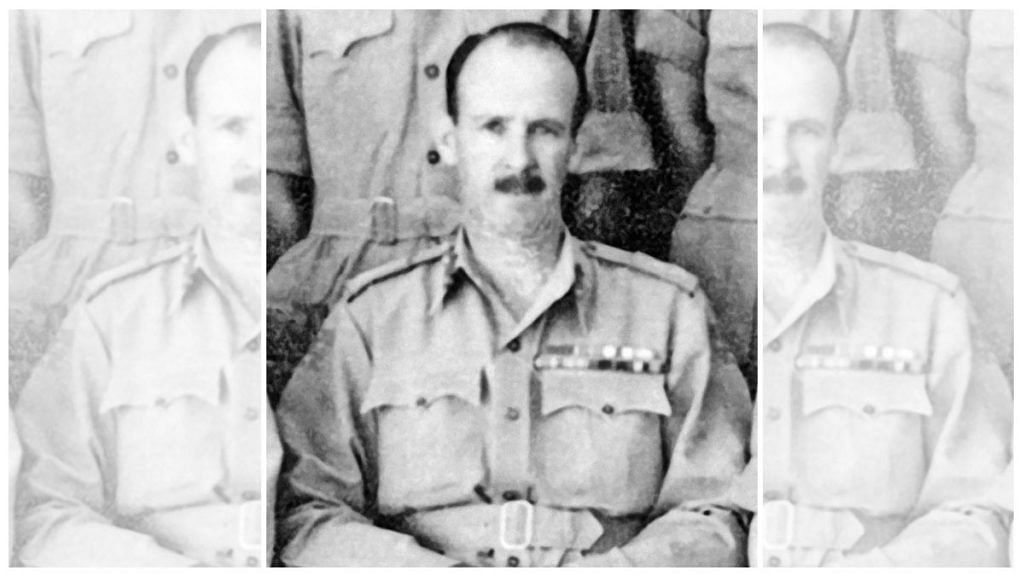New Delhi: The disclosure of papers given by the Indian Army’s second chief, Roy Bucher, to the Nehru Memorial Museum and Library (NMML), is in “national interest”, the Central Information Commission (CIC) observed in an order this month.
However, the CIC did not order the disclosure of these documents, which reportedly deal with the accession of Jammu & Kashmir to India.
Information Commissioner Uday Mahurkar directed the NMML’s Central Public Information Officer to “take the matter up with higher officials” and “secure the necessary permission” before providing a response to RTI activist Venkatesh Nayak, who had sought the documents from NMML under the transparency law.
The documents are significant as they are said to contain insights on the Instrument of Accession, signed on 26 October 1947 by Maharaja Hari Singh, ruler of the princely state of Jammu and Kashmir.
Bucher’s interview
This isn’t the first time that Nayak has sought disclosure of the Bucher papers or written about them.
In an article for The Wire in 2016, Nayak had released some images of the Jammu and Kashmir Instrument of Accession. In 2019, he filed an RTI plea seeking access to the documents.
In response to the RTI query, the NMML’s Public Information Officer said the access to the papers is “closed to the public”, citing instructions from central government agencies.
However, Nayak’s efforts led him to transcripts of an interview of Sir Bucher conducted by historian and biographer Bal Ram Nanda.
“The transcript of the interview with Sir Roy Bucher makes for very interesting reading with tidbits about what happened in J&K narrated from memory and also his love for India,” Nayak wrote in an article for the Human Rights Initiative.
Excerpts uploaded by Nayak of the full transcript appear to corroborate his claims, as Bucher makes some major statements on his first-hand experience of the J&K situation.
For instance, Bucher claimed to have in his possession letters from former PM Jawaharlal Nehru, which he had submitted to the NMML.
“[PM Nehru] had become very perturbed about the shelling of Akhnoor and the Beri Pattan bridge by Pakistan heavy artillery from just within Pakistan; he enjoined me to do all I could to counteract this. There was nothing one could do except counter-shell,” Bucher said.
Bucher also directly quoted from Nehru’s letter, which further expressed the latter’s feelings of uncertainty on whether a United Nations-backed ceasefire would come about.
“I do not know what the United Nations are going to propose. They may propose a ceasefire and what the conditions are going to be I don’t know. If there isn’t going to be a ceasefire… we may be faced with an advance into Pakistan and for that we must be prepared,” Nehru wrote to Bucher in 1948, according to the excerpts.
Bucher then detailed how he was ordered to go ahead with the ceasefire (which he says was to take effect from 31 December 1948 onwards), and claimed that he also submitted to the NMML a copy of his ceasefire signal to then-Pakistan Army Commander-in-Chief Douglas Gracey.
Rise through the military ranks
Born on 31 August 1895, Francis Robert Roy Bucher attended the Edinburgh Academy, the prestigious Scottish private school whose other notable alumni include writer Robert Louis Stevenson, actor Iain Glen, and musician Guy Berryman.
During the First World War, on 15 August 1914, Bucher was commissioned into the British Indian Army and confirmed as a second lieutenant on 5 September the following year, according to a London Gazette list.
The Gazette had also recorded that Bucher’s promotion from second lieutenant to lieutenant took place on 15 November 1916. He had been assigned to the 31st Duke of the Connaught’s Own Lancers, an armoured regiment of the British Indian Army stationed in the North-West Frontier Province that became part of the Pakistan Army following Partition.
Contemporaneous Gazette lists further reveal Bucher’s rise through the military ranks during and after the War, as he was promoted to captain on 15 August 1918, and awarded a Military Cross in 1920, as he and the Lancers fought in the Third Anglo-Afghan War in 1919.
He returned to Britain in 1926 to attend Staff College, a military training institution run by the British Army, for two years.
Following his graduation, he was stationed with the British Indian Army in the Deccan region, and, by 1932, was promoted to the ranks of Major and Lieutenant-Colonel in 1932 and 1939, respectively, according to the Gazette lists.
As the Second World War broke out, Bucher continued his services to the Army in India but was also briefly stationed in Iraq in 1941.
After the War ended, Bucher was appointed as General Officer Commanding Bengal and Assam Area and, in 1946, became the Eastern Command’s General Officer Commander-in-Chief.
Bucher’s ascension to the post of post-Independence India’s second Army chief took place in 1948. He served the position until his retirement in 1949. He was the last British chief of the Army, as K.M. Cariappa succeeded him.
Relatively little has been recorded of Bucher’s post-retirement life, barring his meetings in the early 1970s with Field Marshal Sam Manekshaw, who was an important figure during Bucher’s tenure as chief.
On 5 January 1980, Roy Bucher passed away at the age of 84 in the village of Normanby in North Yorkshire, where he had been living with his wife Maureen, according to an online resource focusing on the history of the village and its residents.
(Edited by Neha Mahajan)
